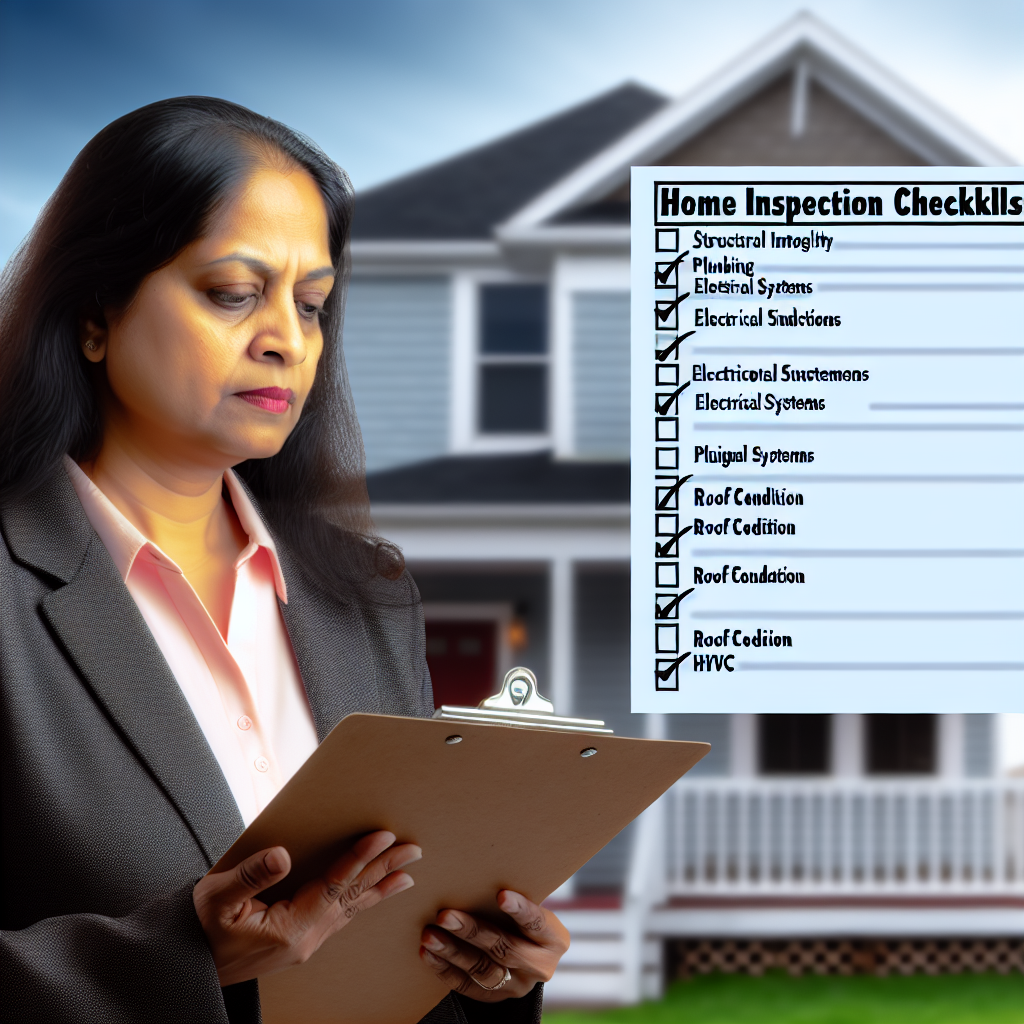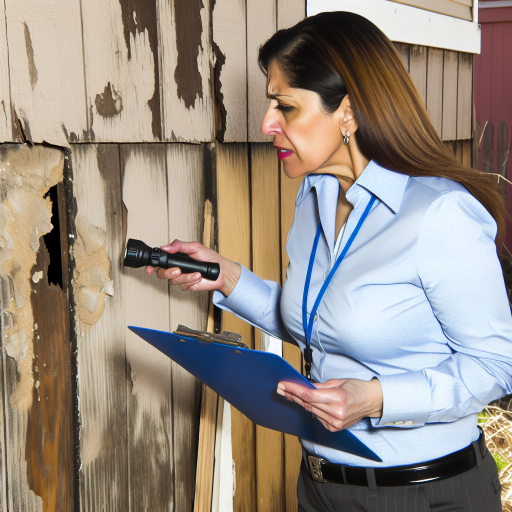Understanding the Importance of a Home Inspection for Real Estate Investments
The Role of Home Inspections
A home inspection serves as a crucial tool for real estate investors.
It identifies potential issues before closing the deal.
Additionally, it provides peace of mind for the buyer.
Understanding the property’s condition is vital for making informed decisions.
Protecting Your Financial Investment
Investing in real estate requires due diligence.
A thorough inspection can highlight hidden costs.
This helps in budgeting for immediate repairs and future maintenance.
Moreover, avoiding costly surprises safeguards your investment.
Negotiating Power
A detailed inspection report gives buyers leverage during negotiations.
It allows you to request repairs or a price reduction.
This can result in significant savings on your investment.
Consequently, understanding the home’s condition empowers negotiation strategies.
Long-term Benefits of Home Inspections
A proactive approach to home inspections fosters long-term savings.
It helps maintain the property’s value over time.
Regular inspections can catch problems early, saving money on repairs.
Transform Your Real Estate Decisions
Unlock personalized real estate insights crafted just for you. Get actionable advice designed to amplify your success.
Get StartedFurthermore, a well-maintained home attracts quality tenants.
Importance of Home Inspections for Real Estate Success
Home inspections offer multiple benefits.
They protect your financial investments and provide negotiation levers.
Using a mindful approach to home inspections pays off.
Components of a Mindful Home Inspection Checklist
Understanding the Importance of a Mindful Approach
A mindful home inspection helps you protect your investment.
This approach emphasizes thoroughness and awareness throughout the process.
It ensures potential issues receive appropriate attention before big decisions.
Identifying Key Areas to Inspect
Begin by focusing on critical areas of your home.
Common components include the roof, plumbing, and electrical systems.
Inspect the foundation for cracks or signs of water damage.
Evaluate windows and doors for functional and structural integrity.
Consider checking the heating and cooling systems thoroughly.
Utilizing a Detailed Checklist
Create a checklist that includes specific items to inspect.
Start with the exterior, noting conditions of walls, gutters, and landscaping.
Showcase Your Real Estate Business
Publish your company profile on our blog for just $200. Gain instant exposure and connect with a dedicated audience of real estate professionals and enthusiasts.
Publish Your ProfileProgress to the interior, checking appliances, flooring, and ceilings.
Include questions about maintenance history and repairs.
Engaging a Professional Inspector
Consider hiring a certified home inspector for a second opinion.
A professional brings valuable experience and expertise to the process.
They can identify issues you might overlook during your inspection.
Furthermore, professionals often provide detailed reports with actionable insights.
Documenting Findings for Future Reference
It’s essential to document everything you discover during the inspection.
Maintain a file with notes, photographs, and reports for reference.
This documentation aids in making informed decisions later.
Use this information when negotiating with sellers or planning repairs.
Planning for Repairs and Maintenance
Once you complete your inspection, prioritize necessary repairs.
Establish a timeline for urgent and non-urgent repairs.
Maintaining a proactive approach avoids larger issues in the future.
Consider setting reminders for routine maintenance tasks.
Step-by-Step Guide to Conducting a Mindful Home Inspection
Preparing for Your Inspection
Begin by gathering essential tools and materials.
You will need a flashlight, notepad, and camera.
Consider wearing comfortable clothing suitable for movement.
Next, schedule your inspection at a time with ample daylight.
Ensure all areas of the home are accessible to inspect thoroughly.
Conducting the Exterior Inspection
Start on the outside of the home for a comprehensive overview.
Examine the roof for missing shingles or damage.
Avoiding potential hazards is crucial at this stage.
Check gutters and downspouts for blockages and proper drainage.
Inspect the foundation for cracks or signs of water pooling.
Assess the siding and windows for any wear or needed repairs.
Transitioning Inside the Home
Once the exterior is evaluated, move indoors with purpose.
Begin in the entryway and check for any signs of water damage.
Next, inspect walls, ceilings, and floors throughout the home.
Take notes on any noticeable scratches, stains, or cracks.
Focusing on Key Areas
Pay special attention to the kitchen for functional appliances.
Showcase Your Real Estate Business
Publish your company profile on our blog for just $200. Gain instant exposure and connect with a dedicated audience of real estate professionals and enthusiasts.
Publish Your ProfileCheck plumbing fixtures for leaks or corrosion.
Additionally, test the functionality of faucets and drains.
Evaluate appliances for age and condition.
Assessing the Electrical System
Inspecting the electrical system is vital for safety.
Check outlets for signs of overheating or damage.
Review the breaker box for any unusual trends.
Ensure smoke detectors and carbon monoxide detectors function properly.
Evaluating Safety and Comfort
Consider the home’s overall safety features during your inspection.
Check for handrails on stairs and adequate lighting in hallways.
Look for any potential hazards, such as loose floorboards.
Documenting Your Findings
After completing your inspection, compile your notes and photos.
Clearly outline areas needing repair or further evaluation.
Use this documentation to negotiate repairs or adjustments.
Your careful inspection ultimately protects your investment.
Explore Further: How to Balance Your Wants and Needs When Choosing a Home
Common Red Flags to Look for During the Inspection
Structural Issues
Look for cracks in the foundation or walls.
Windows and doors should open and close easily.
Check for any signs of significant settling or leaning.
Inspect the roof for missing shingles or sagging.
Water Damage
Examine ceilings and walls for water stains.
Look for mold or mildew smells in areas like basements.
Check plumbing fixtures for leaks or rust.
Pay attention to water pooling outside the home’s foundation.
Electrical Problems
Test outlets for functionality and grounding.
Inspect the main electrical panel for burn marks.
Look for frayed or exposed wiring in visible locations.
Make sure light switches operate properly without flickering.
Pest Infestation
Look for droppings indicating rodent presence.
Inspect for termite damage in wood structures.
Check for cracks or gaps where pests may enter.
Showcase Your Real Estate Business
Publish your company profile on our blog for just $200. Gain instant exposure and connect with a dedicated audience of real estate professionals and enthusiasts.
Publish Your ProfileBe alert for any unusual odors that may suggest infestations.
Heating and Cooling Systems
Inspect HVAC units for rust or leaks around ducts.
Check filters to see if they require replacement.
Test the functionality of thermostats for accurate readings.
Ensure vents are unobstructed and adequately distributing air.
Delve into the Subject: Understanding Credit Scores For First-Time Homebuyers In The USA
How to Prioritize Findings from a Home Inspection
Understanding the Importance of Prioritization
Prioritizing findings from a home inspection is crucial for effective decision-making.
This process helps homeowners address the most pressing issues first.
Additionally, it allows for better financial planning for repairs and improvements.
Evaluating Inspection Findings
Start by reviewing the inspection report thoroughly.
Take note of all the issues flagged by the inspector.
Classify these findings based on severity and urgency.
Categorizing Issues
Use a simple triage approach to categorize the findings.
- Critical issues demand immediate attention.
- Major concerns should be addressed soon but are not emergencies.
- Minor issues can be scheduled for later repair.
Assessing Severity and Urgency
Evaluate each finding to determine how it impacts safety and livability.
For example, roof leaks or electrical problems usually fall into the critical category.
Conversely, cosmetic issues might be less urgent.
Consulting with Professionals
Engage with professionals for their insights on the findings.
Experts can provide advice on prioritizing repairs based on their experience.
Consider obtaining estimates to understand the financial implications.
Creating an Action Plan
Develop a clear action plan to address the prioritized findings.
Include timelines for each repair or improvement task.
Moreover, establish a budget to guide your spending effectively.
Implementing the Plan
Start with the most critical repairs as soon as possible.
Regularly review and adjust your action plan based on progress.
Maintain communication with contractors and professionals to stay on track.
Find Out More: Home Inspection Checklist For Buying Older Homes In The USA

The Role of Professional Inspectors versus DIY Inspections
Understanding Professional Inspectors
Professional home inspectors play a crucial role in the buying process.
They have specialized training and certifications that ensure thorough evaluations.
Their expertise provides buyers with an objective overview of a property’s condition.
Moreover, they can identify issues that an untrained eye might overlook.
Showcase Your Real Estate Business
Publish your company profile on our blog for just $200. Gain instant exposure and connect with a dedicated audience of real estate professionals and enthusiasts.
Publish Your ProfileThis is vital when making substantial investment decisions.
The Benefits of Hiring Professionals
Hiring a professional inspector offers many advantages.
Firstly, they use advanced tools and technology during inspections.
This ensures a more accurate assessment of the home’s condition.
Secondly, they provide comprehensive reports detailing their findings.
These reports often include images and recommendations for repairs.
Lastly, having a professional’s opinion can be a negotiating point in contracts.
DIY Inspections: What You Should Know
While DIY inspections can save money, they come with risks.
Many homeowners may lack the experience to spot potential problems.
A casual inspection can lead to significant oversights.
Thus, inexperienced homeowners may face unexpected expenses later.
When to Consider DIY Inspections
However, DIY inspections can be suitable in specific scenarios.
If you’re knowledgeable about home maintenance, your insights may be valuable.
Additionally, performing a preliminary inspection can help you prioritize issues.
This way, you can ask more informed questions of your inspector.
Making Informed Choices
Ultimately, the decision between hiring a professional or conducting a DIY inspection depends on the situation.
If you’re uncertain about your skills, it’s wise to invest in a professional.
A thorough inspection can protect your investment in the long run.
In contrast, if you feel confident, a DIY approach can be a good starting point.
See Related Content: Home Inspection Checklist For Assessing Roof And Attic Conditions
Negotiating Repairs and Price Adjustments Based on Inspection Results
Understanding the Importance of Inspection Results
Home inspections provide crucial insights into a property’s condition.
They reveal hidden issues that may not be visible to the naked eye.
Consequently, addressing these findings is essential for a successful transaction.
Preparing for Negotiations
Gather all inspection reports before starting negotiations.
Highlight areas needing repairs or adjustments in pricing.
This preparation will strengthen your negotiating position.
Communicating with the Seller
Open a line of communication with the seller or their agent.
Clearly outline your concerns based on the inspection results.
Maintain a professional demeanor to foster a collaborative atmosphere.
Proposing Repair Requests
Make specific repair requests based on the inspection findings.
Showcase Your Real Estate Business
Publish your company profile on our blog for just $200. Gain instant exposure and connect with a dedicated audience of real estate professionals and enthusiasts.
Publish Your ProfileConsider prioritizing critical issues over minor ones.
Be reasonable in your expectations to facilitate agreement.
Negotiating Price Adjustments
Use inspection findings to justify any price adjustments.
Provide supporting data from the inspection report for clarity.
This approach can help the seller understand the rationale behind your request.
Considering Compromise Solutions
Sometimes, sellers may not agree to all repair requests.
In such cases, consider asking for a credit at closing.
This compromise can benefit both parties while maintaining progress.
Finalizing Agreements
Once negotiations reach a conclusion, document the agreements.
Ensure all repair commitments and price adjustments are in writing.
This documentation protects both parties and clarifies expectations.
Creating a Maintenance Plan Post-Inspection to Protect Your Investment
Understanding the Importance of a Maintenance Plan
A maintenance plan safeguards your property’s value over time.
It helps identify potential issues before they escalate.
Additionally, it ensures compliance with safety regulations.
Developing Your Maintenance Checklist
Begin by listing all key areas in your home.
Consider factors like plumbing, electrical systems, and roofing.
Include both interior and exterior components.
Specific Areas to Focus On
- Inspect roofing for damage or wear.
- Check gutters and downspouts for clogs.
- Review plumbing for leaks or corrosion.
- Examine electrical systems for outdated wiring.
- Assess HVAC systems for efficiency and cleanliness.
Setting a Maintenance Schedule
Establish a regular schedule for inspections and maintenance.
For example, check your HVAC system seasonally.
Annual roof inspections help catch minor issues early.
Creating Monthly and Seasonal Tasks
- Monthly: Test smoke detectors and replace batteries.
- Quarterly: Clean gutters and trim vegetation.
- Annually: Deep clean carpets and check the foundation.
Budgeting for Maintenance Costs
Set aside funds specifically for maintenance expenses.
Experts recommend allocating 1% of your home’s value each year.
This helps cover unexpected repairs and regular maintenance.
Documenting Your Maintenance Efforts
Keep detailed records of all maintenance performed.
This practice helps maintain accountability and tracking.
It also serves as proof for future buyers.
Consulting with Professionals
Engage with professionals for tasks beyond your expertise.
Licensed inspectors can provide valuable insights.
Consider forming relationships with trusted contractors.
Additional Resources
Maintaining Your Historic Home: A Practical Guide for Homeowners
Showcase Your Real Estate Business
Publish your company profile on our blog for just $200. Gain instant exposure and connect with a dedicated audience of real estate professionals and enthusiasts.
Publish Your ProfileLife and Book Coach – Danielle Tantone Consulting | LinkedIn




